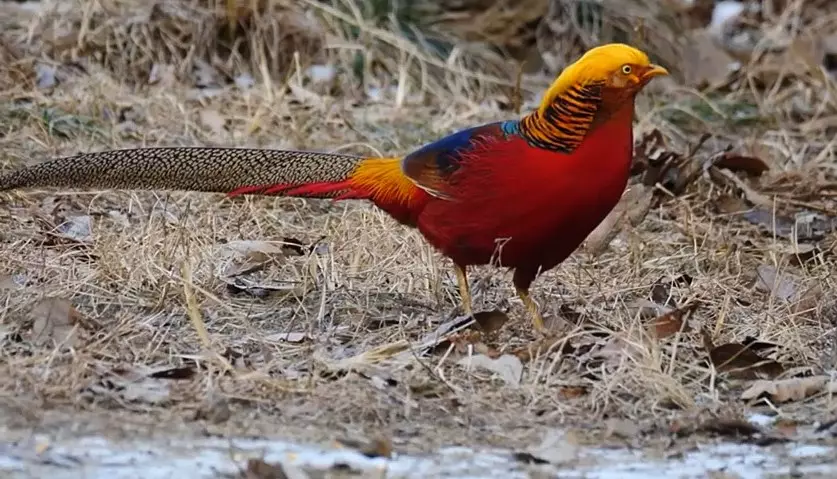
It is not true that golden pheasant has only golden with red plumage. After all, his head is decorated with black and golden feathers, the throat is orange, the top of the back is green, the shoulders are dark blue, and the tail is brown with the color of the colors of the ocher.
Golden Pheasant is known for pronounced sexual dimorphism - the difference between the males and females. The coloring of the female is very inconspicuous in comparison with the color of the opposite sex - gray-brown or rust-brown.
This difference in appearance is explained by the responsibilities of males and females. Wrouders of colorful plumage should attract the attention of the potential lady of the heart, and that, in turn, protect the offspring from predators. Eggs are simple mining, therefore foxes, wild cats and ferrets are often seeping on the nests of golden pheasants.
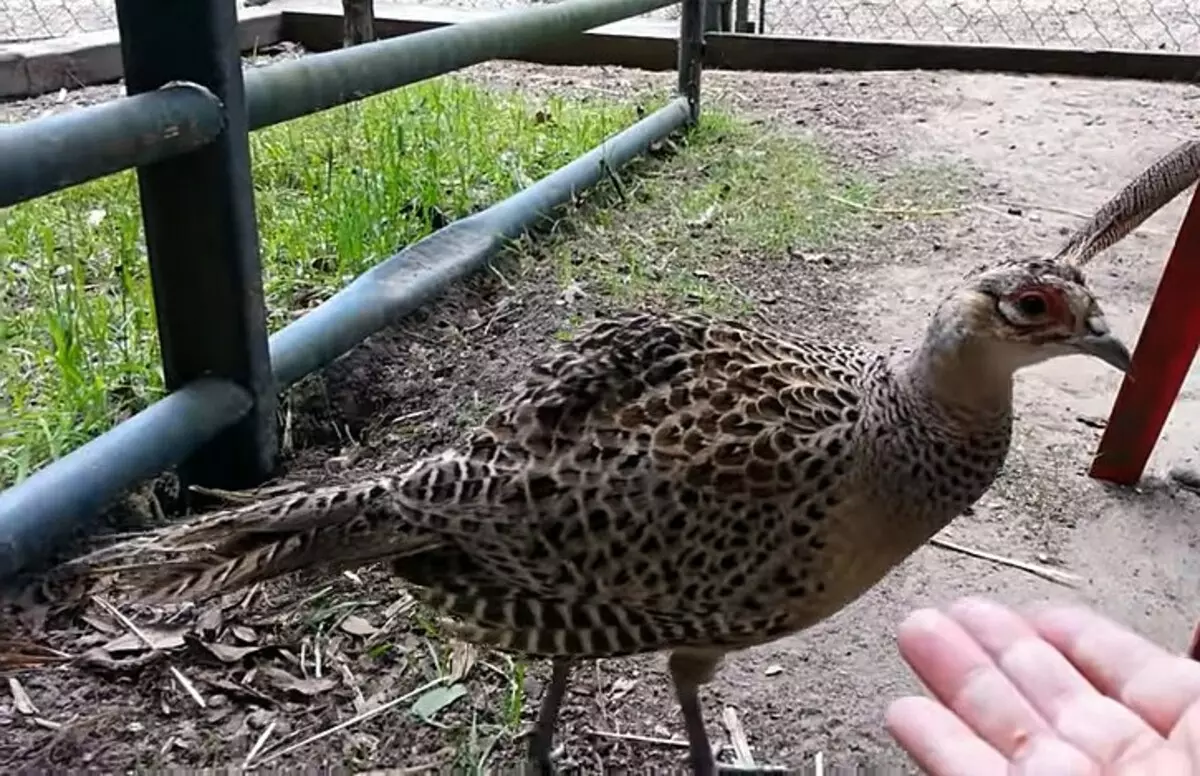
The length of the body of the male reaches 110 centimeters, and the females are significantly less - from 70 to 85. The long tail is occupied with a pattern resembling marble. It is the tail that is almost the same in males and females, only in the first it is noticeably longer. For other parameters, as described above, they are different.
The range of golden pheasant is not so wide. It lives in China, Great Britain and East Mongolia. In China and Mongolia, a nyline mountain belt prefers, foothills, and in the United Kingdom - coniferous, deciduous or mixed forests. The choice of birds is due to the fact that in the forests and foothills there are many high grass, where it is convenient to hide from predators.
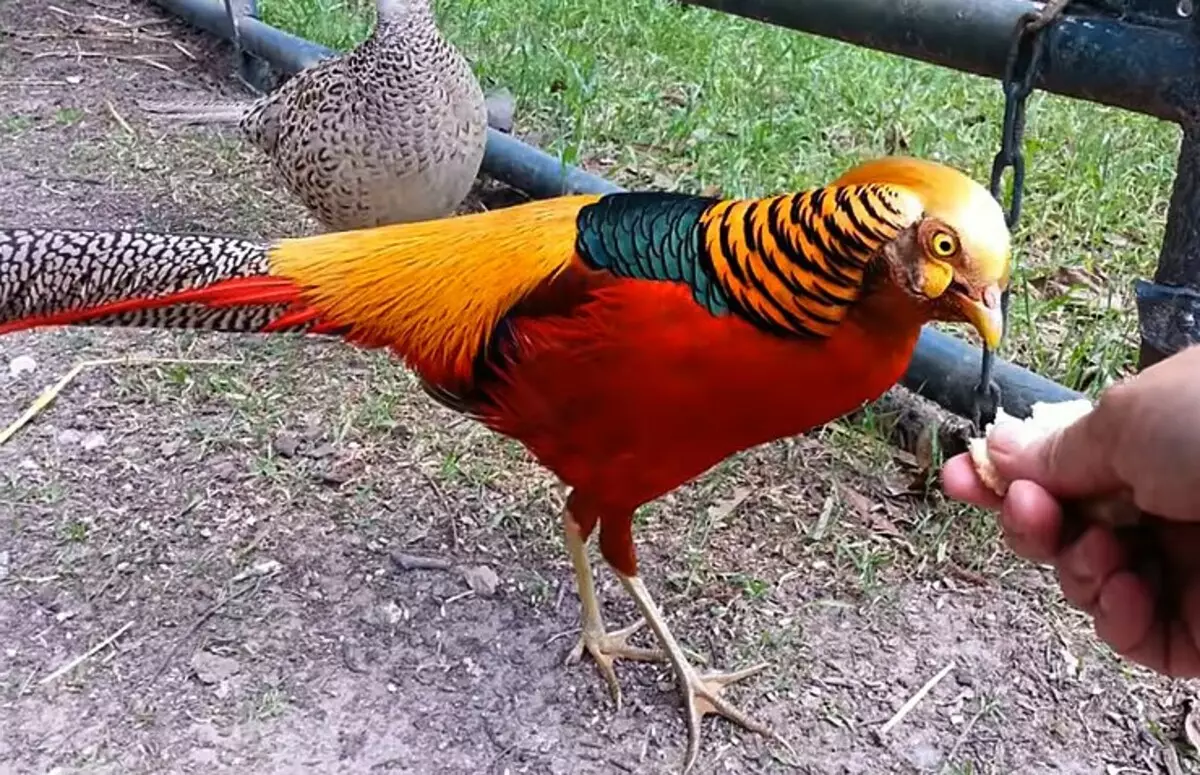
Gold pheasants are calm and extremely careful, prefer to live by one, and the groups are collected only in the spring when the marriage occurs. Like all animals, males begin to behave more aggressive due to the increased concentration of hormones.
After successfully attracting the attention of the female, the males perform a ritual dance, which is bouncing and double sharp screams.
Feed feathers with escapes and leaves of plants, but sometimes include spiders and insects in the menu. Every golden pheasant has its own territory, which he protects, so it fits only within its limits.
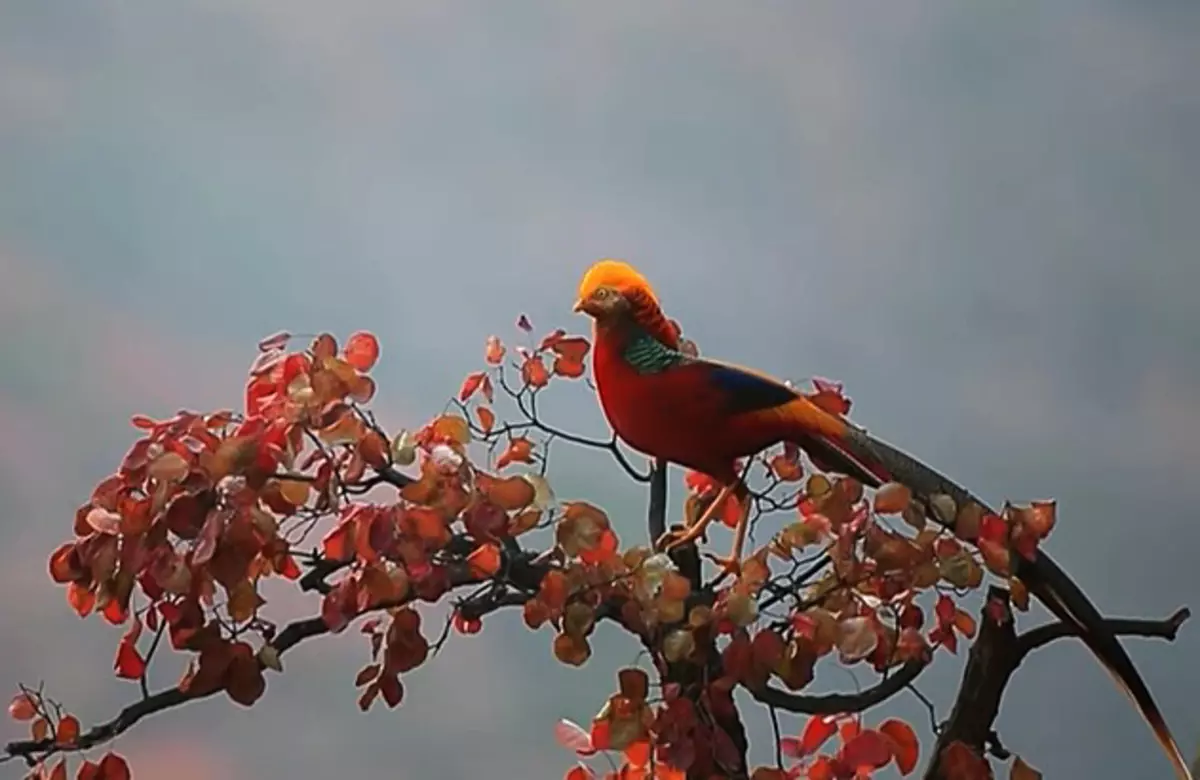
Pheasants lay eggs in thick high grass or shrubs, but not on the swamp. The nest is a fossa in the ground, where the female together with the future offspring is up to 25 days.
After the expiration of the period, the chicks are hatched, which are carried out in a warm fifth day, and then, along with the mother they go to search for food. Native fenats of young leaves after 4.5 months.
Until now, it is not known - polygamines or monogamans these birds, as they give numerous offspring and in fact, and in another case - up to 12 chicks at a time.
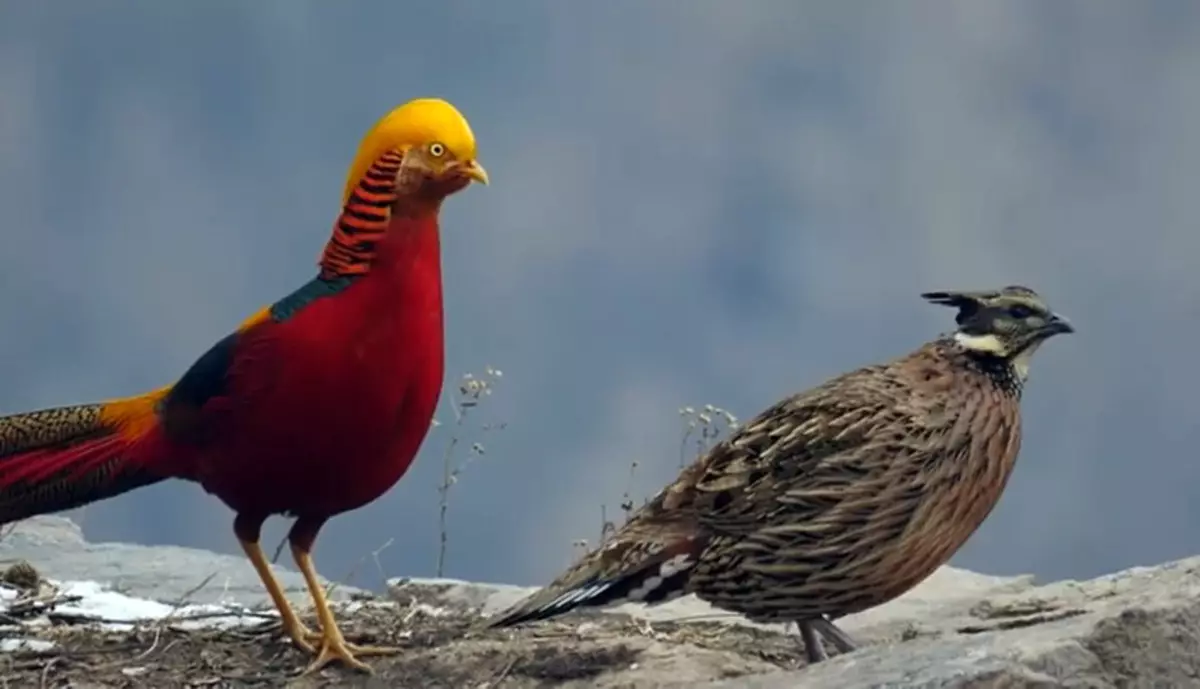
Interesting Facts:
- Despite the big wings, this bird prefers terrestrial movement due to a large body weight. Falling from predators, golden pheasant pursues up to hide in the branches of trees.
- Egg production of one individual depends on the number of females in the group. The fewer females, the more each of them will be rushed.
- Pernation leads an exclusively daily lifestyle, and at night rests on the trees.
- Like other pheasants, gold is very quickly running and able to develop a speed of up to 40 kilometers per hour.
- In China, golden pheasant is considered a symbol of wealth and prosperity.
